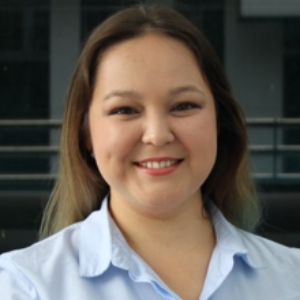Title : Cellular and molecular profiling of critical bone fractures in axolotl
Abstract:
To investigate if SCT cells are able to migrate and contribute to cartilage in CSD, we transplanted tissues with fluorescently labelled CT cells to the wildtype host prior to fracture surgery. The labelled CT cells are migrating to the CSD gap, and some are expressing cartilage progenitor marker, SOX9. Next we assayed cell proliferation, which was diminished in CSD in comparison to blastema.
To identify the factors involved in differentiation of SCT cells to blastema versus CSD, we used bulk and single-cell transcriptomics, which showed changes in proliferation- and blastema-specific gene expression, as well as differences in interaction with wound epidermis and macrophages. Using NicheNet algorithm we examined ligand-receptor interactions in early regenerating limb and CSD. The analysis showed strong interaction of early (3-5 dpa) blastema CT cells with epidermis and macrophages. The epidermal subpopulation in BL samples, but not in CSD samples, manifested wound epidermis (WE) signature. As interaction between WE and stump fibroblasts is essential for activation of the latter to migrate and form blastema. In CSD, fibroblasts and epidermis did not exhibit strong connection and lacked ligand-receptor pairs present in the blastema. To understand if particular blastema-specific signaling influences transcriptome profile of CT cells, we analyzed CT GRNs in blastema and CSD.
Whole transcriptome GRN inference identified switching of transcriptional factor (TF) hubs, such as WNT and TGFb pathway TF. We discovered differential usage of TCF7L2 and LEF1 TFs in BL and CSD and revealed members of WNT pathway possibly influencing the SCT cell fate between homeostatic and regenerative mode. We suggest to rewire GRN in CSD to induce blastema-like phenotype and eventually promote bone bridging
The audience will be able to expand their understanding of fracture repair and regeneration in the non-conventional model organism. Moreover, the insight into bulk and single cell RNAseq, GRN construction, novel single-molecule FISH will be given.
Audience Take Away Notes:
- The presentation will expand the general knowledge on regeneration processes and offer state-of-art technological solutions for cellular and molecular analysis of fracture repair
- The predicted candidate genes may be further tested in mammals and lead to fracture healing and appendix regeneration therapies development
- The audience will be able to expand their understanding of fracture repair and regeneration in the non-conventional model organism. Moreover, the insight into bulk and single cell RNAseq, GRN construction, novel single-molecule FISH will be given
- The presentation will expand the general knowledge on regeneration processes and offer state-of-art technological solutions for cellular and molecular analysis of fracture repair
- The predicted candidate genes may be further tested in mammals and lead to fracture healing and appendix regeneration therapies development
- The audience will be able to expand their understanding of fracture repair and regeneration in the non-conventional model organism. Moreover, the insight into bulk and single cell RNAseq, GRN construction, novel single-molecule FISH will be given



